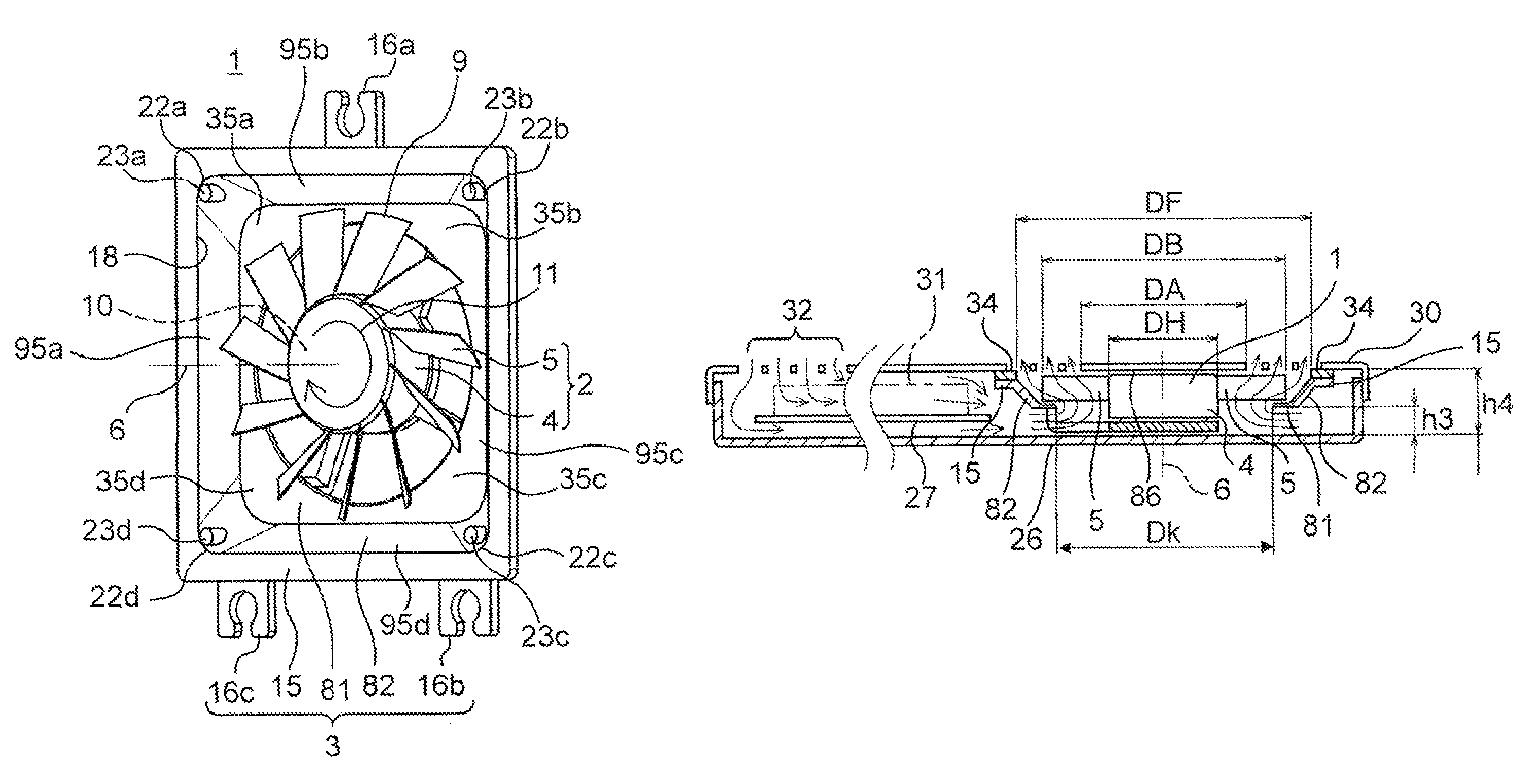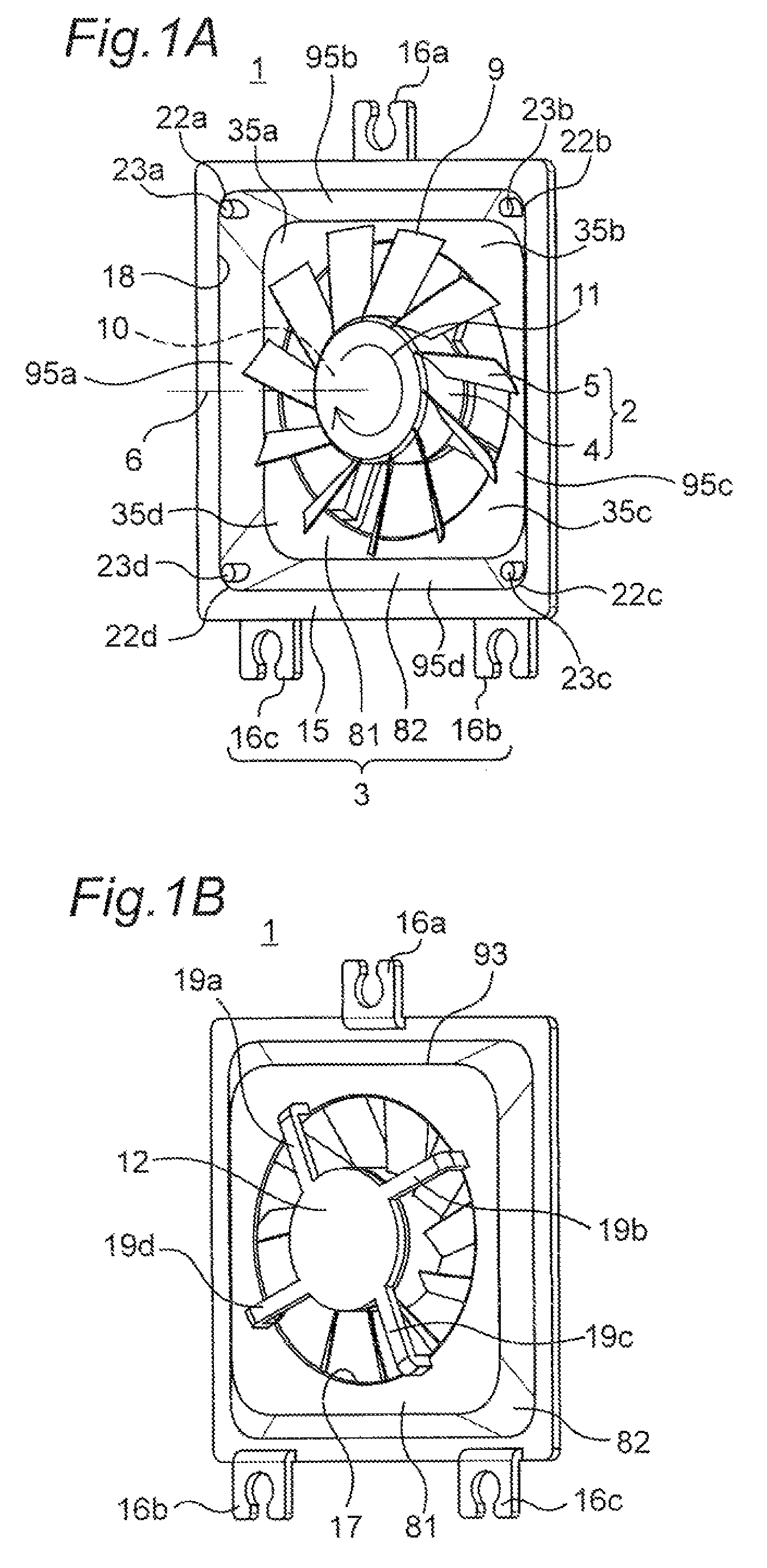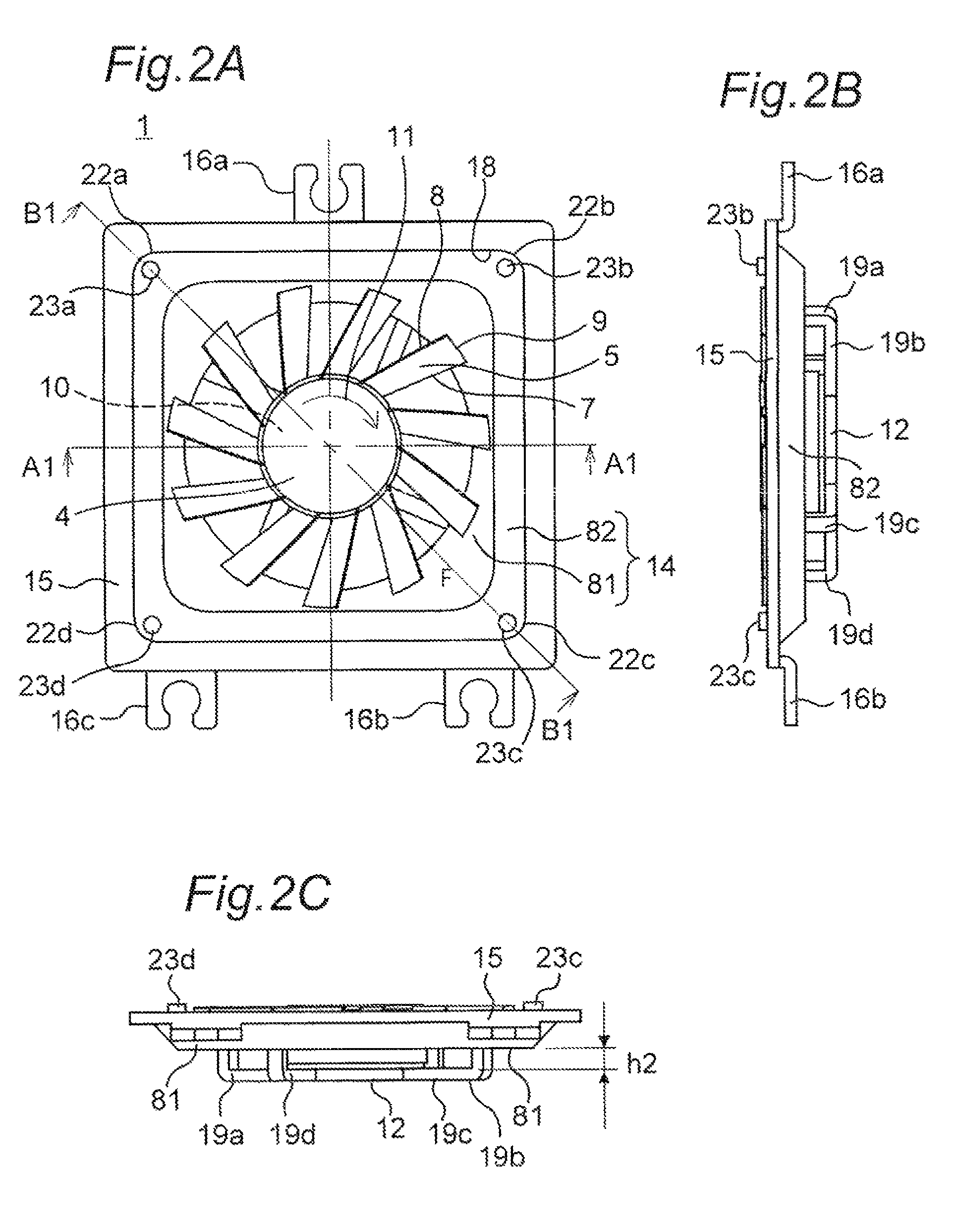Fan and electronic device equipped with the same
a technology of electronic devices and fan blades, which is applied in the direction of ventilation systems, electrical apparatus casings/cabinets/drawers, instruments, etc., can solve the problems of difficult resin molding, high cost, and undercutting between the blades, so as to reduce the exhaust flow, the effect of greatly increasing the static pressur
- Summary
- Abstract
- Description
- Claims
- Application Information
AI Technical Summary
Benefits of technology
Problems solved by technology
Method used
Image
Examples
first embodiment
[0139]The fan according to a first embodiment of the present invention and an electronic device equipped with this fan will be explained using FIGS. 1A to 12.
[0140]FIG. 1A is a perspective view of the fan according to the first embodiment of the present invention when viewed from the exhaust side, and FIG. 1B is a perspective view of the fan when viewed from the suction side. FIG. 2A is a plan view of the fan according to the first embodiment of the present invention when viewed from the exhaust side; FIG. 2B is a right-side surface view of the fan shown in FIG. 2A; FIG. 2C is a bottom-side surface view of the fan shown in FIG. 2A; FIG. 2D is a partial cross-section view taken along line A1-A1 of the fan shown in FIG. 2A; FIG. 2E is a partially enlarged cross-section view of FIG. 2D; and FIG. 2F is a partial cross-section view taken along line B1-B1 of the fan shown in FIG. 2A. The outline of the blade 5 shown in FIGS. 2D, 2E, and 2F shows a rotation trajectory when the blade 5 is r...
second embodiment
[0203]Next, the constitution of the fan according to a second embodiment of the present invention will be explained using FIGS. 13A to 16B. FIG. 13A is a perspective view of the fan according to the second embodiment of the present invention when viewed from the exhaust side, and FIG. 13B is a perspective view of the fan shown in FIG. 13 A when viewed from the suction side. FIG. 14A is a plan view of the fan according to the second embodiment of the present invention when viewed from the exhaust side, and FIG. 14B is a plan view of the fan shown in FIG. 14A when viewed from the suction side. FIG. 14C is a bottom-side surface view of the fan shown in FIG. 14A. FIG. 14D is a partial cross-section view taken along line A5-A5 of the fan shown in FIG. 14A, and FIG. 14E is a partial cross-section view taken along line B5-B5 of the fan shown in FIG. 14A. FIG. 14F is a partially enlarged cross-section view of FIG. 14E. The outline of the blade 5 shown in FIGS. 14D and 14E shows the rotation...
third embodiment
[0219]Next, the constitution of the fan according to a third embodiment of the present invention will be explained using FIG. 17.
[0220]FIG. 17A is a plan view of a fan 1y according to a third embodiment of the present invention when viewed from the exhaust side. FIG. 17B is a partial cross-section view taken along line A6-A6 of the fan 1y shown in FIG. 17A. The outline of the blade 5x shown in FIG. 17B shows the rotation trajectory when the blade 5x is rotating. FIG. 18 is a partial cross-section view of an electronic device in which the fan 1y shown in FIG. 17A is mounted.
[0221]A fan 1y according to the third embodiment of the present invention differs from the fan 1x according to the second embodiment in that a disc 90 is newly provided. The fans are the same with respect to all other points, and the constitution of the fan 1y according to the third embodiment will be explained below while omitting any duplicate explanations.
[0222]The disc 90 is fixed to a portion of the blade 5x ...
PUM
 Login to View More
Login to View More Abstract
Description
Claims
Application Information
 Login to View More
Login to View More - R&D
- Intellectual Property
- Life Sciences
- Materials
- Tech Scout
- Unparalleled Data Quality
- Higher Quality Content
- 60% Fewer Hallucinations
Browse by: Latest US Patents, China's latest patents, Technical Efficacy Thesaurus, Application Domain, Technology Topic, Popular Technical Reports.
© 2025 PatSnap. All rights reserved.Legal|Privacy policy|Modern Slavery Act Transparency Statement|Sitemap|About US| Contact US: help@patsnap.com



